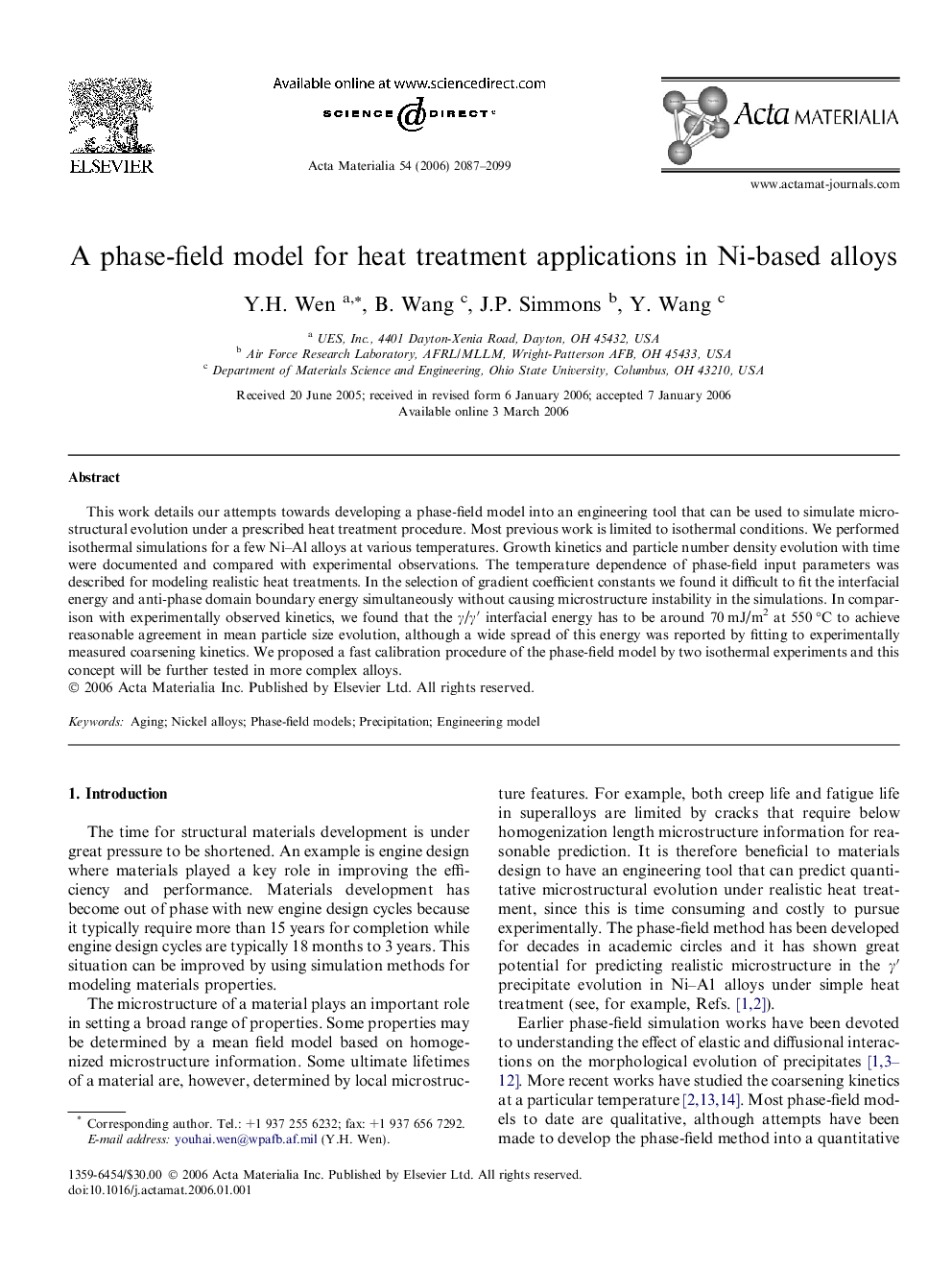| Article ID | Journal | Published Year | Pages | File Type |
|---|---|---|---|---|
| 1450441 | Acta Materialia | 2006 | 13 Pages |
This work details our attempts towards developing a phase-field model into an engineering tool that can be used to simulate microstructural evolution under a prescribed heat treatment procedure. Most previous work is limited to isothermal conditions. We performed isothermal simulations for a few Ni–Al alloys at various temperatures. Growth kinetics and particle number density evolution with time were documented and compared with experimental observations. The temperature dependence of phase-field input parameters was described for modeling realistic heat treatments. In the selection of gradient coefficient constants we found it difficult to fit the interfacial energy and anti-phase domain boundary energy simultaneously without causing microstructure instability in the simulations. In comparison with experimentally observed kinetics, we found that the γ/γ′ interfacial energy has to be around 70 mJ/m2 at 550 °C to achieve reasonable agreement in mean particle size evolution, although a wide spread of this energy was reported by fitting to experimentally measured coarsening kinetics. We proposed a fast calibration procedure of the phase-field model by two isothermal experiments and this concept will be further tested in more complex alloys.
